#Patrick Le Quément
Text
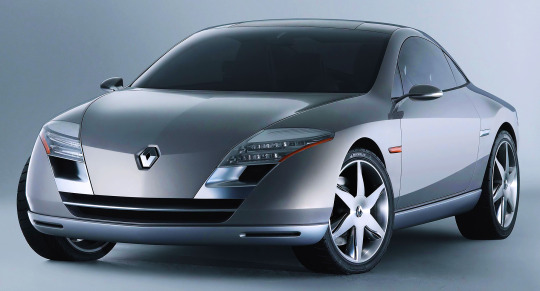
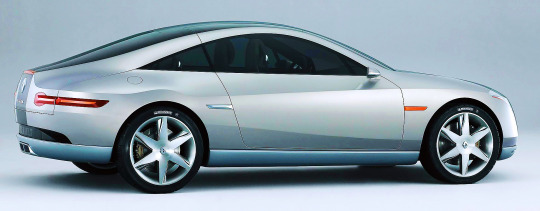
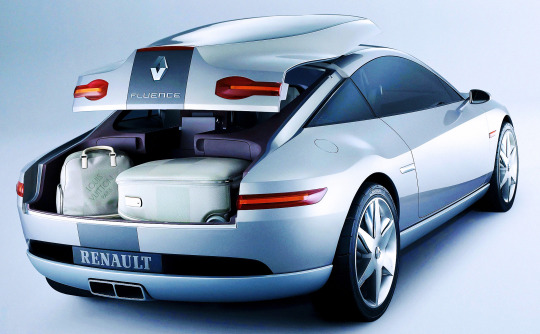
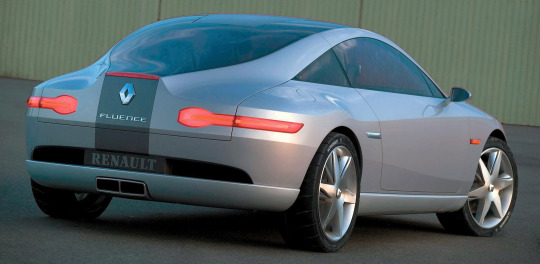
Renault Fluence Concept, 2004. A compact coupé prototype styled by Renault’s design chief (until 2009), Patrick le Quément.
#Renault#Renault Fluence#Renault Fluence Concept#concept#prototype#compact coupé#design study#Patrick le Quément#2004
118 notes
·
View notes
Photo

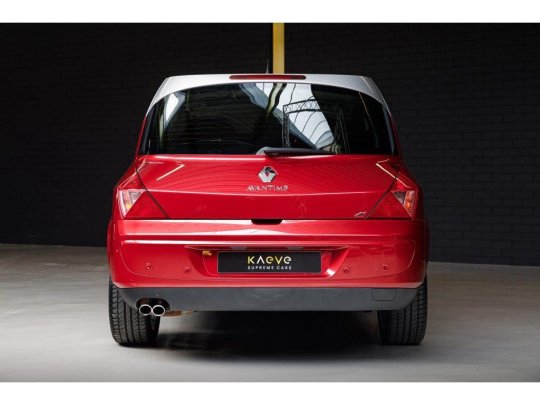

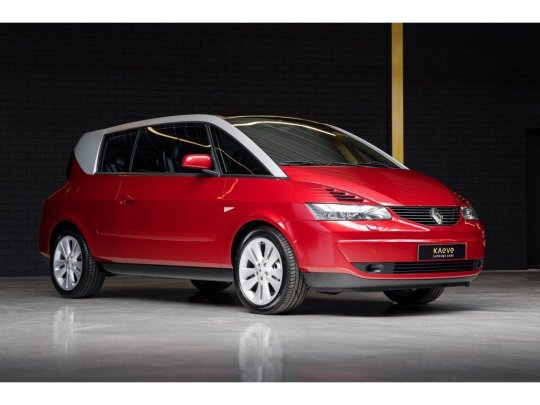




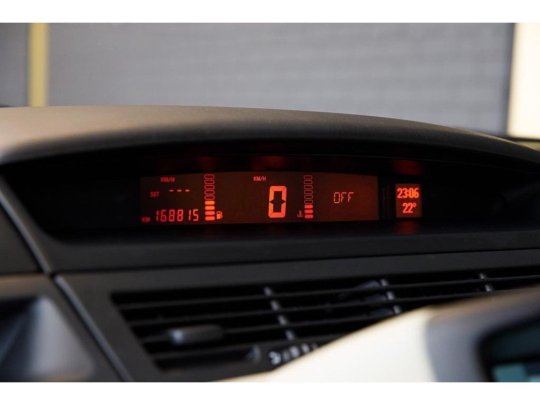

Renault Avantime 3.0 V6 24V Privilège
The Avantime was designed and built by Matra, then affiliated closely with Renault and known not just for building vehicles like the Matra Bagheera and Rancho, but also for their defence arm that builds a range of missiles and bombs. The styling was handled by Renault design boss Patrick Le Quément, whose fingerprints are also on cars like the Twingo, Kangoo, and Vel Satis.
It was a design intended to shock passers-by. At the time, project manager Theirry Metroz said that "we wanted someone walking around the car to be continually astonished. When you look at the front, you can't imagine what the back will be like, and vice versa." Which is a very bold goal to set for a vehicle, though the company seems to have executed it well here. The company wanted buyers, who were migrating to the German luxury brands in worrying numbers, to take a fresh new look at Renault, and then hopefully decide that it was a brand they wanted in their driveways.
Matra designed the Avantime to sit on the platform of the Espace, a much more conventionally styled minivan. Cutting the rear doors (and significant length) from the Espace meant that a B-pillar wasn't needed, allowing a glass space mostly unencumbered by structure with the windows rolled down. It's the same elegant look you'd see in something like the current Mercedes-Benz E and S-Class coupes. The roof was a full panoramic glass piece, with a large opening front panel. It sat just four passengers, but the two in the rear enjoyed seats clad in leather from the same company used by Rolls-Royce, and the rear seats were higher than the fronts to allow better visibility from the theatre-style arrangement. The side windows would lower automatically, allowing easier access to those seats through the long front doors and the opening where the window would normally reside.Renault offered three engines in the Avantime, two gas and one diesel. This comes with the larger of the gas engines, a 3.0L V6 (badged 3.0 but really 2.9) that produced 204 hp. While a five-speed automatic transmission was offered, this one came with the six-speed stick, a box much more in tune with the car's grand touring ambitions.
21 notes
·
View notes
Text
UM RENAULT TWINGO COM 24 ANOS E 0 KM!
Com Paulo Gouveia

Calma, não descobrimos nenhum “unicórnio” ou um Renault Twingo esquecido numa garagem fechada há décadas. A história dos 0 km deste modelo de 1999, e que está nas mãos do Paulo Gouveia desde sempre, é bem mais prosaica. Conheça os detalhes de mais um caso de paixão assumida por um Twingo nas linhas que se seguem.

Em Março de 1999, ao folhear uma revista, o Paulo Gouveia deparou-se com uma publicidade que lhe despertou a curiosidade: eram duas páginas inteiras dedicadas a uma nova versão, completamente equipada e com detalhes exclusivos, do Twingo fase II. “Eu era um fã assumido do Twingo desde 1993. Tirei a carta de condução em 94, mas naquela altura não tinha disponibilidade financeira suficiente para adquirir um automóvel novo. Na família já tinham passado um R5, um Super 5 e um R19 e, por isso mesmo, a minha predisposição para gostar da Renault era mais acentuada”.

Em 1999, depois da satisfeita a curiosidade e já com condições financeiras para o fazer, o Paulo Gouveia decidiu dar o passo em frente: “Aquele Twingo foi a melhor escolha que podia ter feito. Custou 2.520 contos ou, ao valor atual, 12.570 euros. Ainda guardo o cartão com o valor anotado no stand no Porto! Depois de o encomendar e de esperar, impacientemente, durante 4 meses, devido às opções escolhidas - como o teto panorâmico e o ABS - e a outras confusões burocráticas, chegou finalmente o dia de dar à chave do meu novo Twingo Initiale Paris. Esta designação comercial que substituiu a anterior denominação Bacara, representava os modelos mais exclusivos da Renault e era a nova versão topo de gama da fase 2 do Twingo”.

De facto, apresentado no salão Automóvel Mundial de Paris em 1998, o Twingo Initiale Paris estava equipado de série com quase todos os opcionais disponíveis nas outras versões, mas com detalhes exclusivos: estofos, fole, manete da caixa de velocidades e volante em pele clara, botões, manípulos e puxadores com revestimentos soft touch, alcatifa e tapetes com um design específico, jantes de alumínio Maya da mesma cor da carroçaria que, diga-se, também era exclusiva deste modelo, a cor metalizada 190 - verde amêndoa. Na apresentação em Paris, a Michelin equipou este modelo com uns revolucionários pneus PAX, que dispensavam o pneu suplente pois mantinham a capacidade de circular mesmo furados durante mais de 100km, embora esta solução não tenha chegado à fase final de comercialização do Twingo Phase II.

“Passados uns dias após ter recebido o meu novo Twingo, resolvi ir visitar uns amigos a Bordéus e, já que estava em França, aproveitei e dei um salto a Paris! Depois disso, este Twingo nunca mais parou de passear. Foram várias as viagens a Madrid, Valencia, Barcelona, e claro, corremos Portugal de lés a lés. É o Twingo do dia a dia, das férias, dos festivais de verão com os amigos, do campismo…"

"Até já foi protagonista de um episódio de uma série de televisiva, já esteve em exposições a representar o Clube Twingo, é o carro de eleição do meu filho de 3 anos e, não menos importante, foi o carro do meu casamento. Por isto tudo conta com atualmente com 0 quilómetros! Passo a explicar, ao passar dos 300.000 km o odómetro voltou ao 0! É comum em alguns Renault mais antigos com odómetros digitais isto acontecer”.

Tal como na altura o diretor de design da Renault, Patrick Le Quément, sempre ambicionou, este Twingo “funciona” para muitos utilizadores como um pequeno e simpático animal de companhia. “Está sempre lá, faz parte da família, está sempre pronto para nos acompanhar para todo o lado e arrancar uns sorrisos, todos os dias, até ao fim da sua vida. O meu Twingo é muito, mas mesmo muito, espaçoso, é confortável, tem ar condicionado, um interior luminoso por ter o teto em vidro, é económico, extremamente prático, e cabe tudo lá dentro, até uma antiga scooter Vespa já transportou. Esta versão, mesmo sendo topo de gama, mantém a versatilidade e total modularidade dos primeiros twingos, somando um refinamento e um bom gosto sem paralelo que advém da feliz combinação de tons e materiais, resultando numa harmonia difícil de igualar. Perfeitamente atual, até para os dias de hoje, mais para quê? Este está completamente novo, até os tapetes de origem ainda estão a uso”.

Como confessa o Paulo Gouveia, “durante os 24 anos o cuidado foi permanente. Tudo foi sempre arranjado o mais depressa possível, por mim, nas situações mais simples, e pela marca nos arranjos e revisões maiores, inclusive a reparação total do motor aos 180.000 km por quebra da correia de distribuição. Por distração minha deixei passar o intervalo recomendado e o pior aconteceu, a conta foi muito pesada, mas valeu bem a pena. Recentemente fiz uma revisão total do motor por mim e também na Renault, com a montagem de todos os sensores e periféricos novos, suspensão nova, arranjo dos estofos da frente (a pele estava a estalar), retoques na pintura e uma limpeza a fundo".
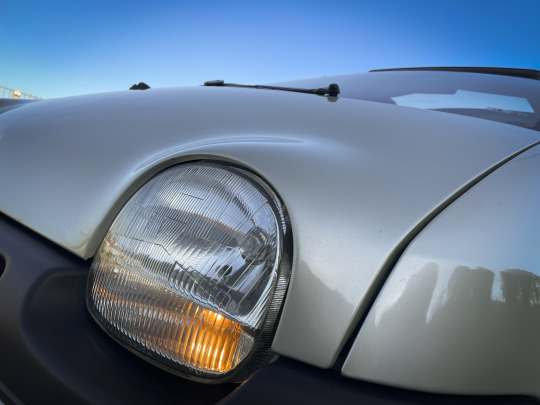
Mas o Twingo não é o único Renault na vida do Paulo Gouveia. “O meu Twingo partilha a garagem lá de casa com outro ícone que restaurei recentemente, um R5 TL de 1975. É muito engraçado ver algumas semelhanças em dois modelos tão importantes para a Renault”.
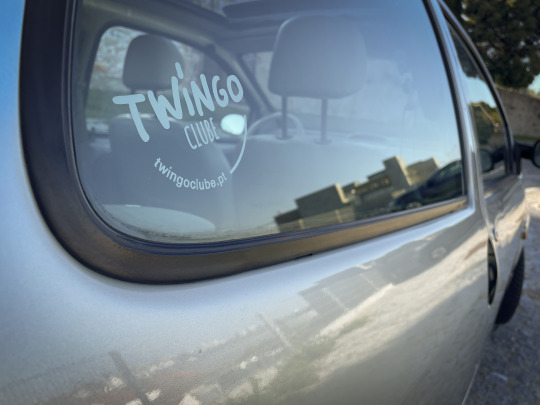
Pela “admiração” pública a que o seu Twingo está sujeito, o Paulo Gouveia foi desafiado por amigos, também entusiastas do modelo, a criar o Clube Twingo PT. “Recentemente assumi a direção do clube. Estamos empenhados em fazer amigos com o mesmo espírito inovador e arrojado do Twingo, com outra atitude. O Clube está em franca expansão. Reconhecido pela Renault, está a cativar todos os que gostam de Twingo. Em ano da comemoração dos 30 anos do Twingo, vamos até Paris. Uma grande viagem que contará com a presença de 4 exemplares da 1ª série e com todos os outros associados que se quiserem juntar nesta aventura. Também estamos a preparar o 2º grande encontro nacional que este ano será no Fundão. Vão certamente ser bons momentos. O Twingo é mesmo uma forma positiva de viver a vida, com 4 rodas e muita paixão”.
3 notes
·
View notes
Photo
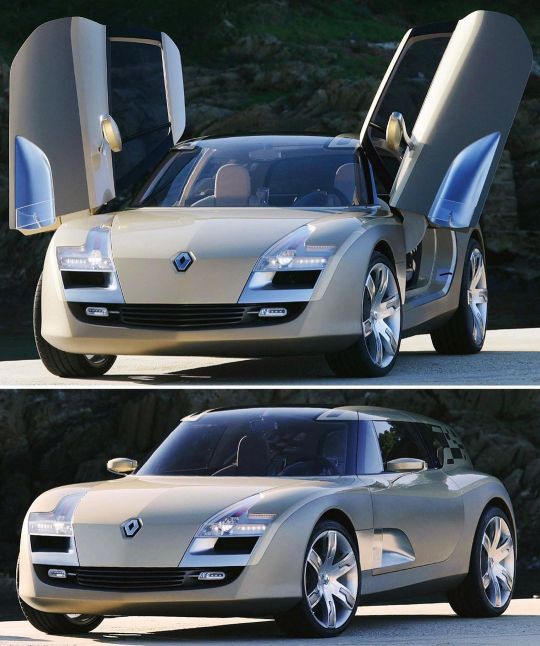
🥠2006 Renault Altica Concept🥠 A 3-door shooting brake prototype with butterfly doors designed by Patrick Le Quément. The Altica featured a “Synthetic Jet,” an aerodynamic device consisting of a 2mm slot at the rear of the roof through which air was alternately sucked or blown to control the separation of air depending on the car’s speed. It was claimed to reduce the Altica’s Cd by up to 15%. • • Visit www.Story-Cars.com • • #storycars #conceptcar #conceptcars #prototype #renaultaltica #renaultconcept #renaultconceptcar #shootingbrake 📸/📚: Renault; Stéphane Foulon https://www.instagram.com/p/CnyCxNPseE5/?igshid=NGJjMDIxMWI=
#storycars#conceptcar#conceptcars#prototype#renaultaltica#renaultconcept#renaultconceptcar#shootingbrake
2 notes
·
View notes
Photo
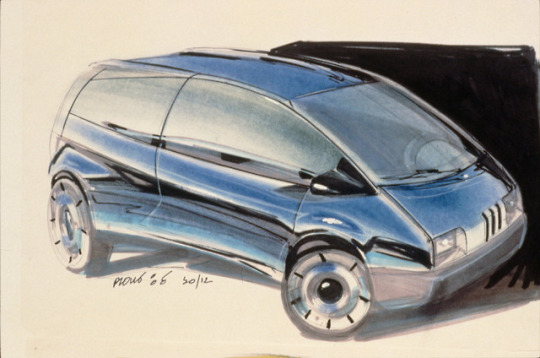
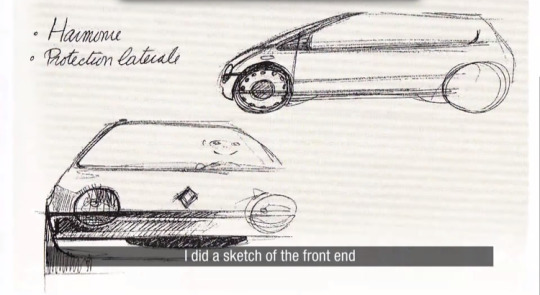

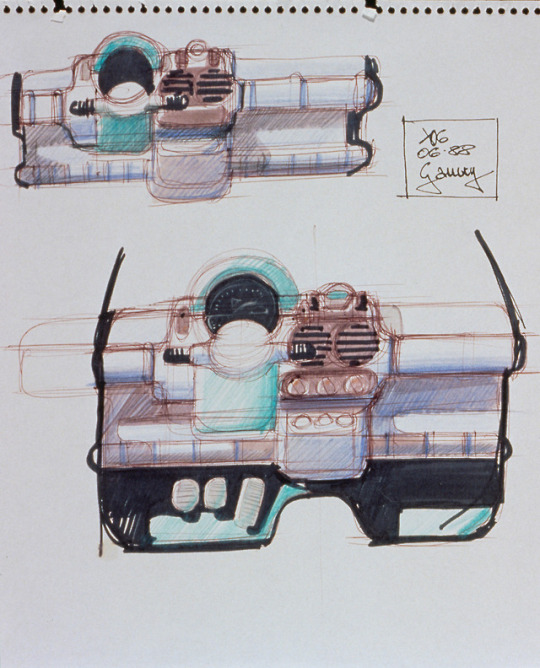

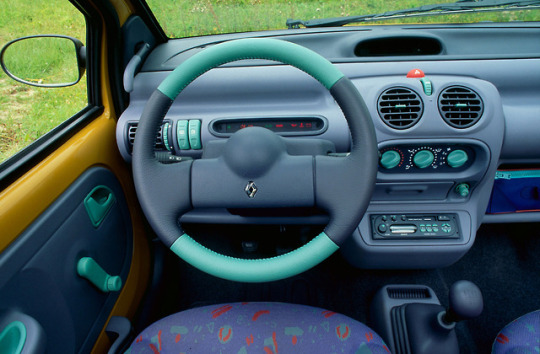

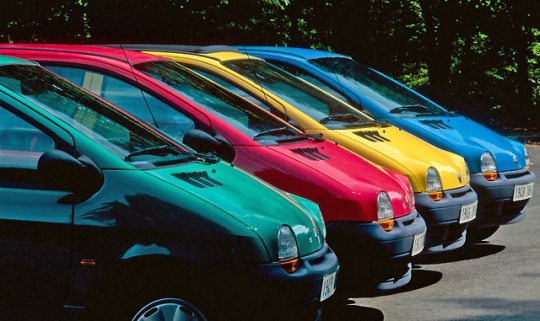
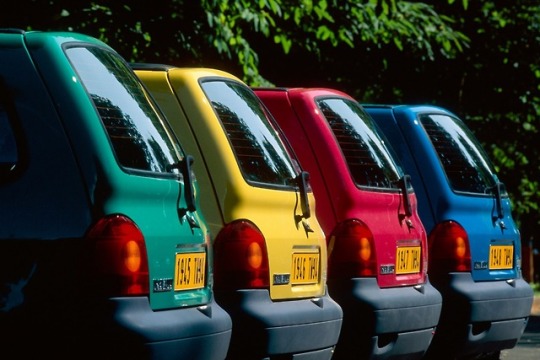
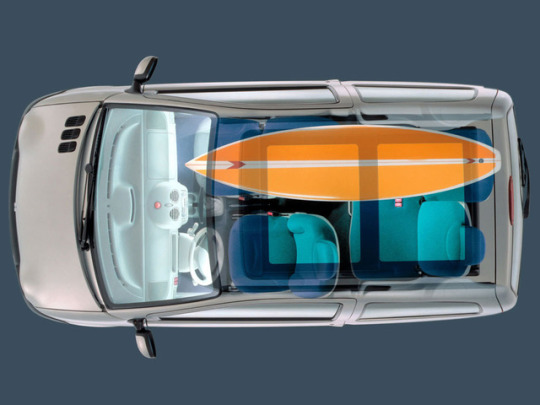
[New Series Alert] From Inception to Production
Part 1 - Renault Twingo!
The first generation Twingo (two door, front engine) debuted at the Paris Motor Show on 5 October 1992, receiving its formal market launch in continental European markets beginning in April 1993. It was sold in Europe’s LHD markets until August 2007, and received intermediate restylings in 1998, 2000 and 2004. It was never sold in RHD markets.
Twingo is a portmanteau of the words twist, swing and tango.
#inception#production#renaultlove series#renaultlove#renault love#renault#twingo#car#auto#concept#french#voiture#city car#automobile#patrick le quément
68 notes
·
View notes
Photo
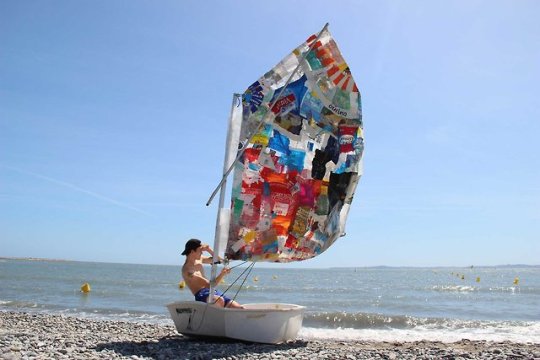
“Plastic Odyssey,” The Sustainable Design School
#art#design#sustainability#plastic#Consumerism#patrick le quément#the sustainable design school#cumulus#sea#boat#sailing#fun#sustainable design#circular economy#pollution#human footprint
28 notes
·
View notes
Text
Book club for car designers part 2: book recommendations.
I actually managed to read a few car design books in the last year, one upside of lockdown it seems. There are many coffee table, or references works on cars and even car design (in theory). A lot of these are very dry- and essentially just worth checking for photography or facts and data, but not for entertaining reading. I guess I won’t be sent any further review copies by publishers as I was…
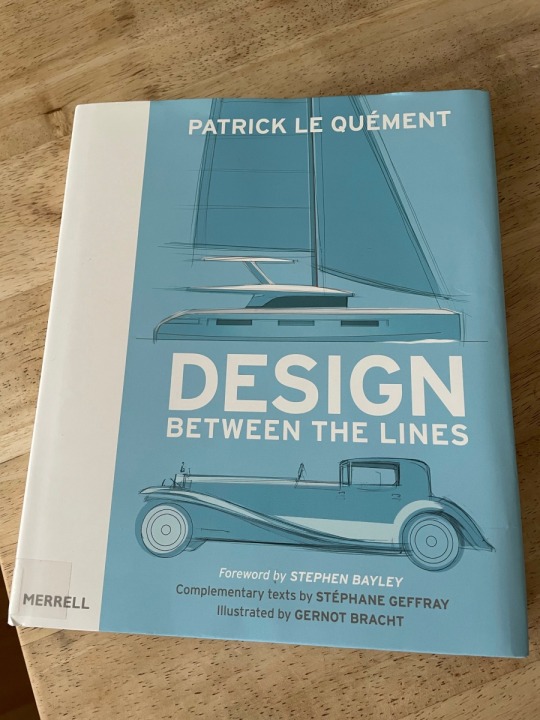
View On WordPress
#book review#car books#car design#design history#design process#Mazda Design#Patrick Le Quément#Peter Birtshistle#reference books#Renault Design#vehicle design
0 notes
Photo

Avantime. Still lauded as one of the finest moments of Patrick le Quément’s tenure at Renault
64 notes
·
View notes
Text

The Renault Avantime is a grand tourer marketed by the French manufacturer Renault, designed and manufactured by Matra,between 2001 and 2003. As a one-box design without B-pillars, styled by Patrick Le Quément, the Avantime combined the design elements of an MPV, estate or shooting brake with the style of a 2+2 coupé and elements of a convertible.
Engine
Petrol:
2.0 L F4Rt turbo I4
3.0 L ES9 A V6
Diesel:
2.2 L G9T dCi I4
1 note
·
View note
Text
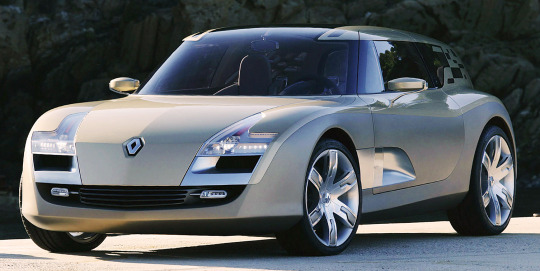
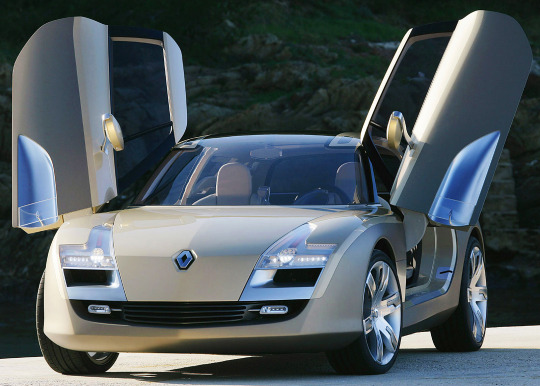


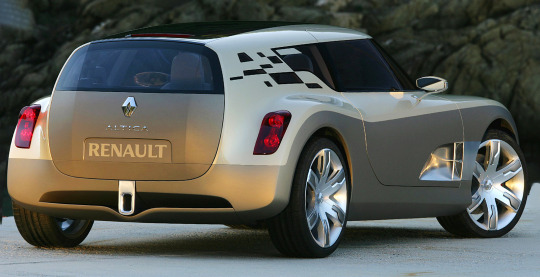
Renault Altica Concept, 2006. A 3-door shooting brake prototype with butterfly doors designed by Patrick Le Quément. The Altica featured a “Synthetic Jet”, an aerodynamic device consisting of a 2mm slot at the rear of the roof through which air was alternately sucked or blown to control the separation of air depending on the car’s speed. It was claimed to reduce the Altica’s Cd by up to 15%
photographs by Stéphane Foulon
#Renault#Renault Altica Concept#Renault Altica#Patrick Le Quément#concept#prototype#shooting brake#design study#2006#butterfly doors#Synthetic Jet#aerodynamic
174 notes
·
View notes
Text
The Ugliest Cars of the 1990s
The 1990s saw a sea change in automotive design as cars got sleeker and more aerodynamic. Sure, we saw some beautiful cars in the 1990s—but we also saw some real horrors. Here are the worst of the worst.
1990 Chevrolet Lumina
The GM-10 cars were really quite spectacular, at least by General-Motors-in-the-Roger-Smith-years standards: The Olds Cutlass Supreme looked futuristic, the Pontiac Grand Prix looked sporty, and the Buick Regal looked, er, regal. So how did the Lumina end up as a featureless blob? We imagine that just as the designers were congratulating themselves on three great cars, they remembered that they forgot to design the Lumina. In the frantic struggle to come up with something, someone jostled their coffee, pointed to the droplets on the desk and said “Let’s just make it look like that.”
1990 Chrysler Imperial
It’s not just the ancient styling (a rip-off of Cadillac’s front-wheel-drive DeVille; see our Ugliest Cars of the 1980s list) that makes the Imperial so ugly. Or the hidden headlights. Or the overstuffed front bench seat, or the large-font digital dash, or the whitewall tires, or the use of enough chrome to blind an entire village, or the fact that its target buyer was obviously a male between the ages of 75 and deceased. No, what bothers us the most is that giant seam on the rump, the place where Chrysler lengthened the car to make it look even more like a Caddy. Why bother to hide it, when the owners probably won’t even notice since they left their reading glasses on the nightstand? The Imperial was shameless—an ancient K-car derivative that Lee Iacocca dictated into existence for his aging cronies. It was about this time that people started whispering that the man who saved Chrysler should retire before he killed it again.
Read More:
Damn Your Eyes: The Ugliest Cars Ever Made
The Ugliest Cars of the 1950s
The Ugliest Cars of the 1960s
The Ugliest Cars of the 1970s
The Ugliest Cars of the 1980s
1991 Chevrolet Caprice
Chevrolet’s goal with the new Caprice was to make us forget the badly-outdated car it replaced; instead, the new car had us pining the return of the old. It looked as if Chevy had simply hooked up an air hose to the old Caprice and inflated its body panels. The new Caprice used the same 1970s-era mechanical bits as the old one, so not only did it look like the Goodyear Blimp, but it drove like it, too. Buyers were limited to old men and police departments, and we understand cops preferred Caprices to Crown Vics because it was much easier to handcuff a perp who is doubled over laughing at your car. When we have a spat with our colleagues down the hall, our below-the-belt blow of choice is to remind them that this was their Car of the Year for 1991.
1992 Renault Twingo
Designer Patrick Le Quément reportedly wanted the Twingo’s front fascia to look like a smiling face, but to us the Twingo looks like it’s just received a rather serious fright. Perhaps it drove in front of a mirror. Silly as it looked on the outside, the Twingo was even more ridiculous on the inside. The instrument panel was mounted in the center of the dash, a cost-saving measure for cars built with both left- and right-hand-drive—except the Twingo wasn’t built for right-hand-drive markets, so all this setup accomplished was to annoy the driver. The seat upholstery looked like something you’d use to wrap a birthday present for a five-year-old. And what’s up with mounting the antenna on the driver’s side mirror? Is that so you can break it off and gore anyone who laughs at your car? Because if that’s the case, you’re going to need a lot of replacement antennas.
1992 Subaru SVX
There are certain things we expect in a sports car, like racy good looks. Also, fully-opening side windows and a manual transmission. The Subaru SVX had none of these. From the front it’s not a terrible looking car, but things start to get a bit weird as you get to the doors, and by the time you make it to the quarter panels it’s all gone completely to hell. What’s up with that strange stand-alone crease? Why does the C-pillar look like it was drawn with the Photoshop clone tool? Why does the bumper have a seam right above a groove that would be perfect for hiding a seam? So many questions, and yet so few answers. By the way, the accountants found this car ugly, too—Subaru put an outrageous price tag on it and still managed to lose money on each one.
1994 Ferrari F512 M
Seeing this car raises two questions. 1) Who looked at a Testarossa and said “Gosh, we could make it a lot uglier”? 2) When this person is found, will they be shot, hanged, drowned, or all three?
1994 Ford Mustang
The fourth-generation Ford Mustang is one of the cars that never received the ridicule it deserved, perhaps because buyers were still traumatized from the Mustang II. (We can imagine Ford saying “Go ahead, make fun of it, and we’ll build you a Mustang based on the Aspire, see if we don’t!”) Just as the Mustang II was ruined by the 1970s, the fourth-gen Mustang was ruined by the ‘90s, with soft and gentle curves on a car that made its name with razor-sharp creases. Ford must have seen the problem, because it ran ads comparing the 1994 Mustang with the ’64 original, but all they did was highlight the differences: The only things the ’64 and the ’94 had in common was the ancient live rear axle. Happily, as with many FoMoCo styling disasters, this led to the 2005 Mustang, arguably the best-looking Mustang since the original… but not before we had to endure ten years of this eyesore.
1994 Ford Scorpio
The Scorpio was an executive-class car in Europe, which some of us will remember as the Merkur Scorpio. It was a successful car—or at least it was until Ford did this to it. The second-gen Scorpio featured bulging-eye headlights, a full-width taillight that appears to have fallen off the trunk lid and landed on the bumper, and an interior with so much fake wood trim that a dozen plastic trees must have been felled for each one. The Scorpio’s design was so poorly received that Ford, to this day, refuses to release the name of its designer. After five years of giving away sales to its chief rival, the Opel Omega (a car we would get as the Cadillac Catera (see below, too)), Ford not only discontinued the Scorpio but gave up on the executive class altogether.
1995 Buick Riviera
The Riviera was often used as a proving ground for Buick styling, for better or for worse—and the final Riviera was definitely worse. To be fair to the Riv, it did have some rather intriguing lines; the C-pillar and trunk lid, viewed from just the right angle, are quite graceful. But it’s almost impossible to get over that Beluga-whale-inspired front end, and those buyers who could were put off by the low-rent, plastic-fantastic interior. Cursed with conservative engineering and V-6 power (V-8s being reserved for Cadillac and the closely-related and equally-ugly Oldsmobile Aurora), the Riviera wound up dismissed by would-be buyers as a second-rate luxury coupe, and yet another opportunity to reverse Buick’s image as an old-man brand was squandered.
1995 Chevrolet Monte Carlo
We expect the occasional “WTF?” moment from General Motors, but this is the mother of all of them—the bland, boring, soulless, featureless, forgettable mother. It’s as if the brand manager said “Restyle the Monte Carlo” and what the design department heard was “Unstyle the Monte Carlo.” We know what really happened: The Monte Carlo name was dusted off and affixed to the two-door version of the Lumina, already a poster child for anonymity. For the twenty-five years since its inception, the Monte Carlo had been notable for its standout styling; we can think of few such storied nameplates in automotive history that have been so badly abused. To be fair, General Motors was at least being honest: The bland, boring styling delivered on its promise with a bland, boring car.
1995 Lancia Ypsilon
At the Passover Seder, it is traditional to sing a song called “Dayenu,” which means “it would have been enough,” a sentiment that applies equally well to this rather unfortunately-styled subcompact. Had designer Enrico Fumia merely given the Ypsilon that silly, chinless, pinched face, Dayenu. Had he stopped at the oddly curved-down beltline, Dayenu. Had he merely outlined that ridiculous line in black plastic, Dayenu. Had he merely jammed cheese-wedge-shaped taillights under the lip of the oversized tailgate, Dayenu. But he did all of that, and the result is one of the ugliest Lancias ever created—and to that, we say oy vey.
1996 Ford Taurus
The original Ford Taurus was a truly revolutionary car, particularly in the area of style and design, so Ford faced a familiar dilemma: How do you follow up a legend? We don’t know what the answer is, but we sure as feces know what it shouldn’t be: This. In an attempt to make something truly revolutionary, Ford went with… round. Round headlights. Round grille. Round roof. Round rear window. When the car was unveiled at the 1995 Detroit Auto Show, we bet a lot of the onlookers went ‘round the back of the stand to throw up.
1996 Saturn SW
Saturn was Roger Smith’s over-funded experiment to build a company-within-a-company that would rejuvenate General Motors. He sunk $5 billion into the venture, but all Saturn did was cannibalize both the sales and development budgets of other GM cars. By the mid-’90s, Saturn’s cars were aging and the brand wasn’t making business sense, so it redesigned the cars on the cheap, and the once-nifty-looking wagon sprouted the doors from the sedan—with predictably awkward results. It was a reminder to buyers (the few that still wanted wagons) of the Saturn’s cheap engineering. Sales of the wagon were never spectacular, and ‘got a lot worse after the redesign.
1996 Suzuki X-90
It’s hard to remember now, but Suzuki was doing quite well in the early ‘90s, particularly with its rugged Sidekick off-roader—and then this happened. The X-90 was supposed to be Suzuki’s attempt to create something cute and fun, but what resulted was the complete opposite of both. If you are ever unfortunate enough to encounter one of these at a car show, walk around it and you will find there is literally no angle from which this car doesn’t look stupid. Critics said it looked like a Barbie car, until Barbie’s press agent released a statement saying she wouldn’t be caught dead in something so hideous. Styling wasn’t even the X-90’s worst failing: It had no back seat, no appreciable trunk space, and no off-road abilities, so it wasn’t even useful as an SUV. It literally was as bad as it looked.
1997 Cadillac Catera
Had the Cadillac Catera been badged as a Chevrolet, we wouldn’t have it on the ugliest cars list. We know this, because the Catera was nearly identical to the 1997 Chevrolet Malibu, which is nowhere to be found on this list. Caddy realized young buyers wanted European road manners, so it brought over the Opel Omega, apparently forgetting that a wreath-and-crest badge does not a Cadillac make. The brand may have been somewhat tarnished at that point, but Caddy still had a remnant of its image of stateliness and elegance. The Catera was just another anonymous blob, and by Cadillac standards, that makes it an ugly car. There is a happy ending, though: Cadillac realized its mistake, and the Catera’s replacement, the CTS, was one of the most handsome Caddies in decades.
1997 Porsche 911 (996)
It’s pretty difficult to make an ugly 911, but the 996 proves German ingenuity can accomplish nearly anything. The 996 was an attempt to bring the 911 into the 1990s, but we can only assume the basis for the design was putting a plastic model of a classic 911 into a toaster oven and letting it melt. The broken-egg-yolk headlights, flattened fenders, and goggle-eyed taillights were a bridge too far even for the most fervent of Porsche apologists, and when the 997 came to replace it, it did so with a more defined shape and a return to the 911’s traditional styling cues.
The post The Ugliest Cars of the 1990s appeared first on Automobile Magazine.
The Ugliest Cars of the 1990s published first on https://kwsseuren.tumblr.com/
0 notes
Text
RENAULT VEL SATIS: O DIREITO À DIFERENÇA
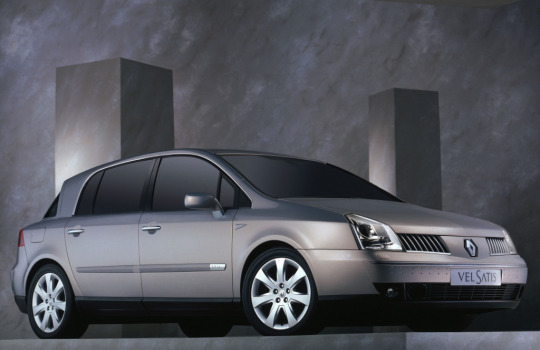
Há 20 anos, a Renault apostava no Vel Satis, arriscando um corte com o mundo automóvel tradicional movido por estereótipos e convenções. Com design ousado, mas, sobretudo, diferenciador, o Vel Satis (acrónimo de “Vel ocidade e “Satis fação”) era também um hino à modernidade, suportado pelo luxo e tecnologia, mesmo se o seu valor nem sempre foi devidamente reconhecido.
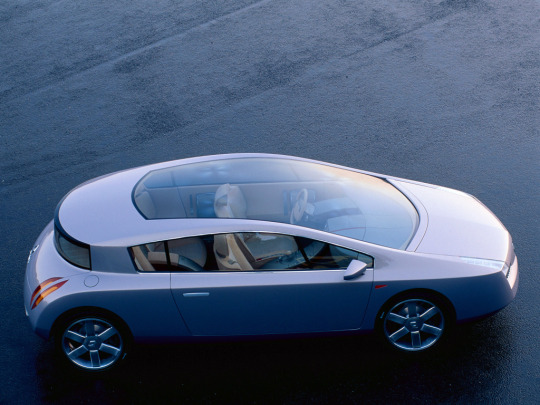
Lançado em 1995, o programa X73 da Renault foi ousado. Preconizava a substituição do Safrane, a berlina topo de gama da marca animou as estradas entre 1992 e 2000, mas não, como muitos esperavam, numa linha de continuidade. Por um lado, o sucesso da Espace mostrava que as quotas de habitabilidade eram importantes e, por outro, o Safrane (com vendas inferiores ao Renault 25) dava conta que valia a pena apostar em algo realmente diferente. A lógica da diferenciação e de contornar o expetável imperou, sustentada pela audácia e inovação.

Face à competitividade do segmento D, a Renault só poderia concorrer com um veículo inusitado, inscrito na cultura Renault definida como “criadora de automóveis”. O projeto X73, era, por isso, um enorme desafio até pelas dificuldades em combinar esta personalidade “fora da caixa” com os tradicionais valores inatos aos veículos deste segmento, de que as elevadas prestações dinâmicas e as potentes motorizações eram apanágio.

O cliente do Vel Satis era muito particular, definitivamente, adepto de culturas fortes, capazes de combinar o gosto pela moda e o “chic”. Para Patrick Le Quément (responsável de design da Renault na época), o modelo que representava o topo da pirâmide na Renault tinha necessariamente que “atingir” clientes modernos, menos conformistas e seletivos, identificados como prontos para se distanciarem de uma convencional berlina familiar.
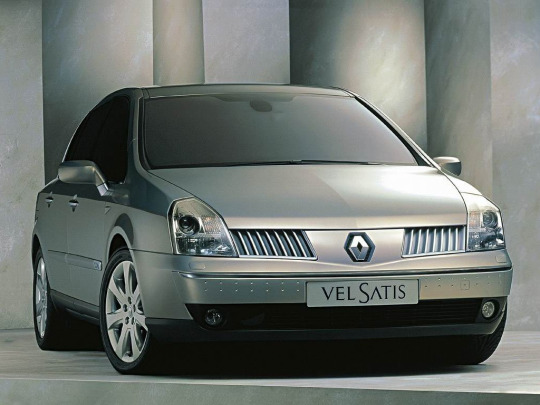
Desvendado a 26 de fevereiro de 2001, no Salão Automóvel de Genebra, o Vel Satis causou, desde logo, sensação, em primeiro lugar, pelo design, com elementos inspirados em diferentes Concept Cars da Renault, já anteriormente apresentados. Um design indubitavelmente mais marcado pelo trabalho de pesquisa amadurecido, do que por um qualquer rasgo de criatividade espontânea.
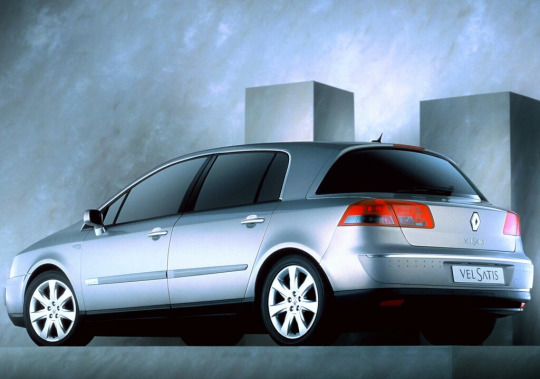
Entre os elementos mais surpreendentes, cotava-se a elevada altura ao solo elevada 1,57m (mais 13 cm que o Safrane), que harmonizava com uma ampla largura que se estendia até aos 2,17m e um longo comprimento de 4,86m. Medidas que se traduziam, de imediato, na perceção de uma excelente habitabilidade, sobejamente superior às das berlinas do segmento de então, e que, se confirmava, mal se acedia ao habitáculo.
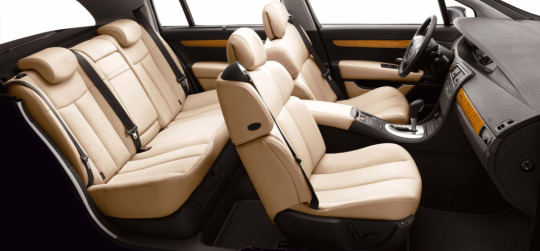
Interior luxuoso e distinto
Desfrutando de elevado volume interior e de uma grande superfície vidrada circundante, o Vel Satis proporcionava luminosidade referencial, ampliada pela escolha de materiais claros (couros cozidos à mão em beije ou cor de areia). A combinação da marchetaria em faia trabalhada e os elementos de alumínio escovado, faziam a fusão perfeita entre o luxo e o desportivo, muito contribuindo para o magnífico ambiente a bordo e para tornar ainda mais vincada a “personalidade” do modelo.

O nível de equipamento que recheava o cockpit - e que variava de acordo com as versões “Expression”, “Privilege” e “Initiale” - incrementava ainda mais a sensação de bem-estar a bordo, juntando o útil ao agradável e privilegiando o conforto de condutor e passageiros. O sistema de navegação por GPS em ecrã 16/9, o regulador de velocidade, o leitor de CD’s da prestigiada marca Cabasse, o ar condicionado automático e, já no exterior, os projetores de xénon eram atributos que marcavam a diferença.
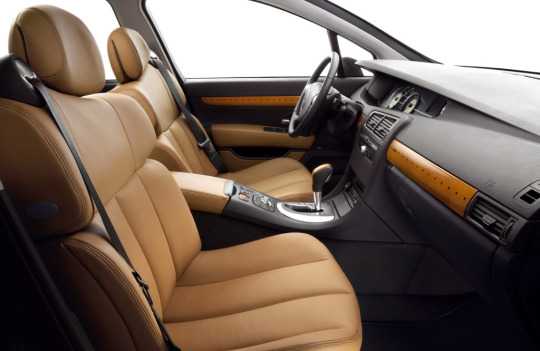
Tão importante como a elevada tecnologia, no Vel Satis a inovação expressava-se na facilidade de utilização dos equipamentos. O sistema de ativação automático do travão de mão, o cartão mãos livres (em substituição da tradicional chave) ou um cartão individual personalizado para regulação dos retrovisores, radio, climatização e bancos (com encosto de cabeça de dupla articulação) eram excelentes exemplos de que a praticabilidade no habitáculo tinha sido objeto de muitas horas de pesquisa e experiências.
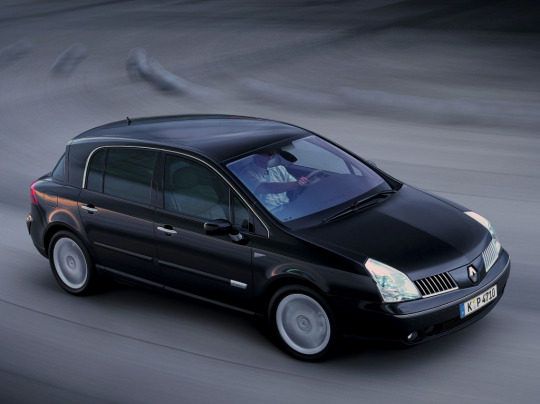
Quatro motores à escolha, a mesma “souplesse”
Apesar das performances não estarem na primeira linha das prioridades para os projetistas do Vel Satis, o modelo acabou por receber motorizações “vivas”, assentes em blocos de quatro e seis cilindros, que ofereciam dinamismo de acordo com o estatuto do segmento a que o modelo pertencia.
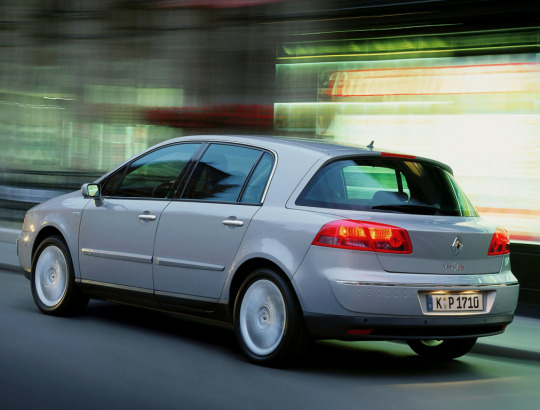
Dois motores a gasolina e duas motorizações diesel constituíram o leque heterogéneo de opções disponíveis, que, em qualquer dos casos, privilegiava mais a agradabilidade de condução do que propriamente as prestações puras e duras, para um automóvel cujo peso ultrapassava os 1700 kg.

Nas versões com motorização a gasolina, a equipada com 2.0 litros turbo (twin scroll) 16V de 165 cv de potência servia de entrada da gama, um degrau abaixo da versão equipada com o motor desenvolvido pela Nissan, de 3.5 litros 24V e arquitetura V6, que desenvolvia a potência de 265 cv e entregava 330 Nm de binário, naquela que constituía também a versão mais dinâmica de toda a gama, capaz de alcançar os 235 km/h de velocidade máxima.
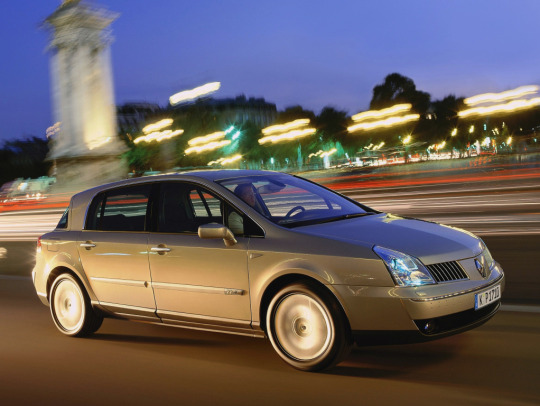
Para quem a principal preocupação era acumular quilómetros com consumos mais contidos, as versões diesel eram a aposta certa. Os motores 2.0 dCi 2.2 litros dCi 16V, turbodiesel, com turbocompressor de geometria variável, emprestava ao chassis 150 cv de potência, garantido vitalidade desde baixos regimes. Mais nobre, o propulsor V6 turbodiesel proveniente da Isuzu, com 3.0 litros de cilindrada, injeção direta e Common Rail, fazia a potência ascender aos 180 cv, o suficiente para catapultar a versão até aos 210 km/h de velocidade máxima.
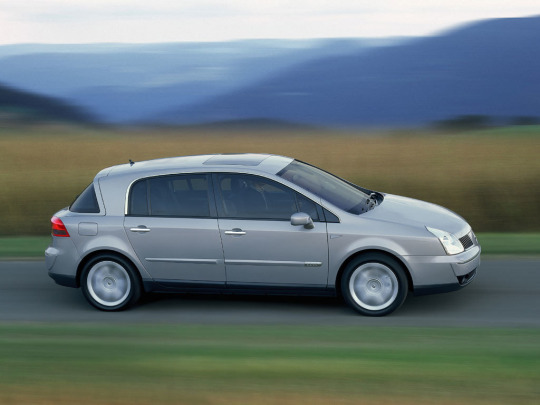
Acopladas aos propulsores estavam caixas manuais de seis velocidades (nas versões 2.0 e 2.2 dCi) ou caixas automáticas de cinco engrenagens (nas versões 3.5 V6 e 3.0 dCi).

Segurança “acima de qualquer suspeita”
Tal como seria de esperar num veículo topo de gama, o fator da segurança não foi descorado, recebendo até especial atenção por parte dos engenheiros, com o Vel Satis a ser equipado com uma grande panóplia de sistemas ativos e passivos de segurança, que tranquilizavam os condutores e passageiros em todo o tipo de viagem. E não foi, certamente, por acaso que o modelo recebeu também, já em 2001, as cinco estrelas nos exigentes testes de colisão da reputada Euro NCAP.
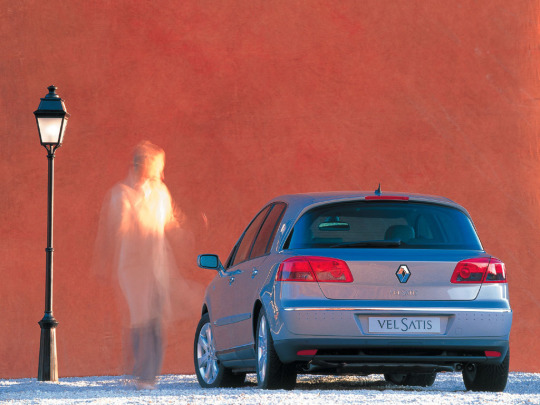
Dispositivos como o ABS (sistema de anti-bloqueio de rodas na travagem), o ASR (sistema anti-patinagem de rodas), o ESP (sistema de controle de estabilidade), o sistema de assistência à travagem de emergência ou o sistema repartidor eletrónico de travagem engrossavam a lista de elementos eletrónicos modernos que, constantemente, zelavam pela segurança dos ocupantes e integridade da diferenciadora carroçaria.
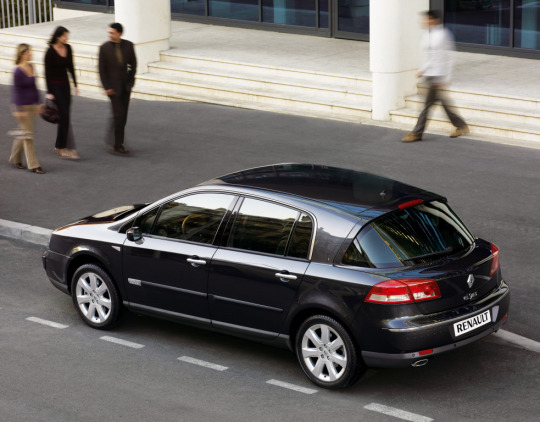
Produção contida e estatuto de neo-clássico
Longe de ter sido a primeira aventura da Renault, no segmento dos automóveis de luxo, o projeto do Vel Satis tornou-se viável industrialmente graças à repartição da plataforma dos outros modelos como o Laguna II e o Espace IV. Num projeto batizado M2/S, imprescindível para a redução de custos finais, na fábrica de Sandouville, em França, o Vel Satis contribuiu para a revolução organizacional da Renault, permitindo baixar consideravelmente os custos finais de produção, com 80 por cento das operações de fabrico, montagem e pintura do modelo a serem efetuadas nos mesmos locais onde também os modelos Laguna e Espace viram a luz do dia.
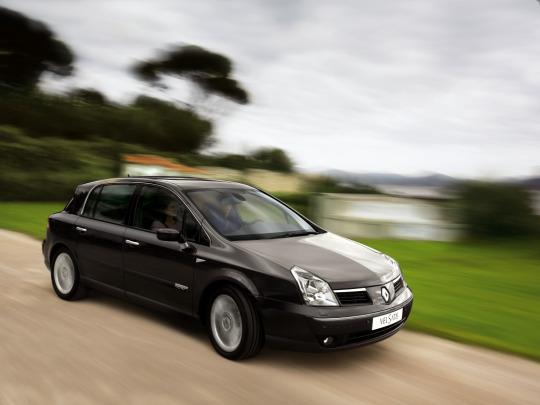
Com início de comercialização em março de 2002 (e leve restyling em 2005), o Vel Satis acabou por prolongar a sua produção até novembro de 2009, com um total de pouco mais do que 60 mil unidades produzidas, com o mercado francês, a absorver, sem surpresa, uma boa parte das encomendas. Mesmo vendendo cerca de metade dos exemplares do seu antecessor, o Safrane, o modelo cultivou uma imagem estatutária e diferenciadora que, ainda hoje, preserva.
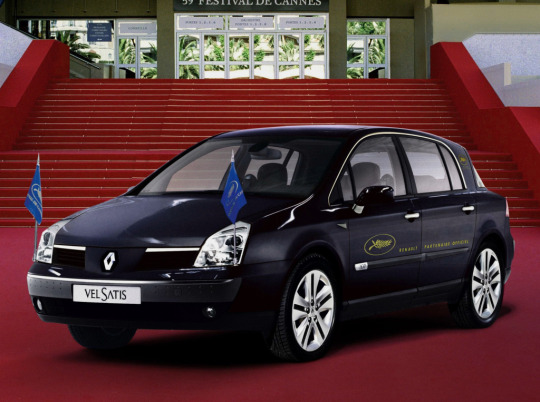
Ao serviço de Chefes de Estado e do cinema
Na sua vivida história, o Vel Satis esteve exposto aos “holofotes da fama” por diversas ocasiões. Escolha de diversos Chefes de Estado franceses - sobretudo pelo ex-presidente Nicolas Sarkozy, numa unidade de comprimento alongado, blindada e guarnecida com equipamento interior ainda mais amplo -, o modelo também foi estrela do Festival de Cannes. Numa altura, em que a Renault foi parceiro oficial do evento, emprestou o seu conforto e luxo aos diversos atores famosos que nele se sentaram. Contudo, na sétima arte, o seu maior protagonismo assumiu-o quando tomou parte na ação dos populares filmes “O Código Da Vinci” e “As Férias de Mr. Been”, que ajudaram a firmar a sua reputação erudita.

Considerado e pertencendo, já hoje, à categoria dos automóveis neo-clássicos, o Vel Satis tornar-se-á, certamente, muito apreciado à medida que a sua idade avança, sendo, garantidamente, mais um modelo Renault a entrar no radar dos colecionadores de automóveis clássicos, quando perfizer 30 anos, desmitificando a ideia de que, afinal, vale a pena ser diferente!
3 notes
·
View notes
Photo
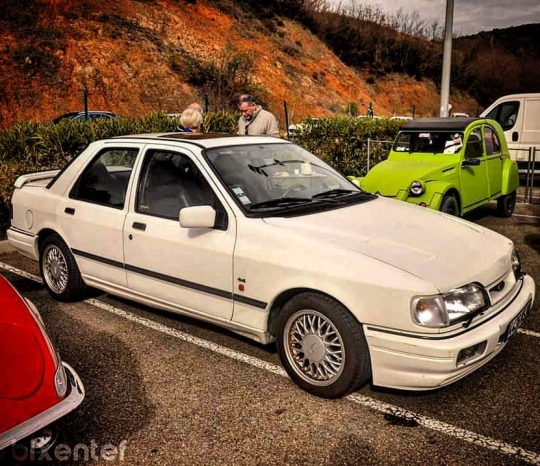
🚘 #bixentef #tourisme #automobile #meteocar #vintage #legendcar #germanycar 🇩🇪 #usacar 🇺🇸 🦅 #france 🇫🇷 #fordsierra4x4 La Ford Sierra est une voiture produite par Ford entre 1982 et 1993. Elle est la remplaçante de la Taunus en Europe (Ford Cortina en Grande-Bretagne) et sera elle-même remplacée par la Mondeo. À l'époque, son style signé d'un certain Patrick le Quément a séduit et les ventes n'ont pas tardé à décoller. 2 750 000 Sierra furent fabriquées, principalement en Allemagne, en Belgique (Genk), au Royaume-Uni, en Argentine, Afrique du Sud... Sierra Cosworth 4x4 La nouvelle Cosworth, basée sur la Sierra Sapphire, fit son apparition en 1988 et fut produite en 11 000 exemplaires. En 1990, sort la Cosworth 4x4 produite à 9 250 exemplaires et dont la puissance est légèrement supérieure (224). Cette dernière bénéficie, en plus de la transmission intégrale, d'un équipement plus complet de série, aussi bien pour le confort (la sellerie cuir, notamment) que pour la sécurité. @wikipedia (à Pôle Mécanique Alès Cévennes) https://www.instagram.com/p/B-C-FoHD9fQ/?igshid=f7jgfsvsoamo
1 note
·
View note
Photo
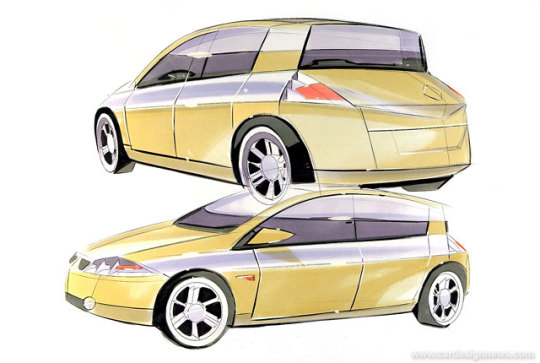
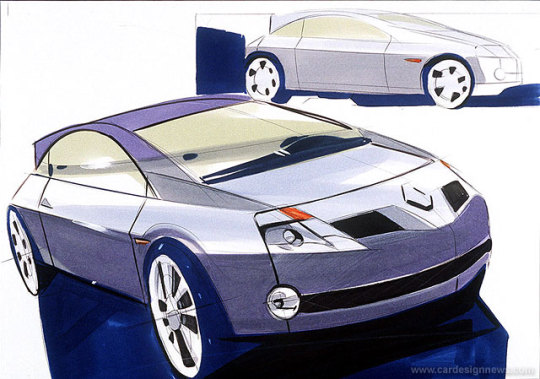
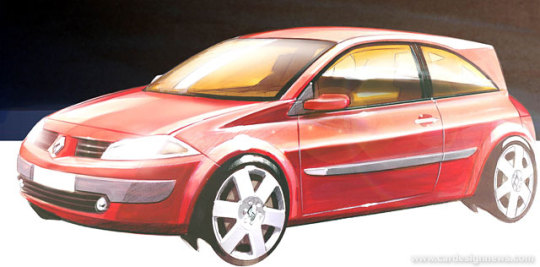

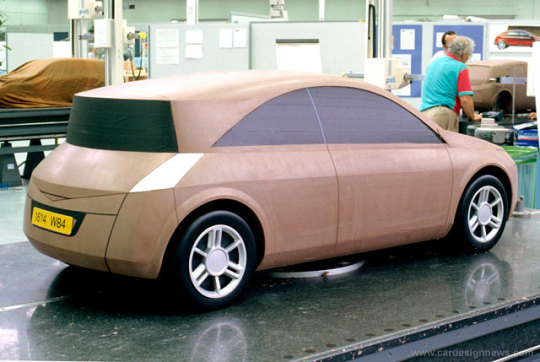



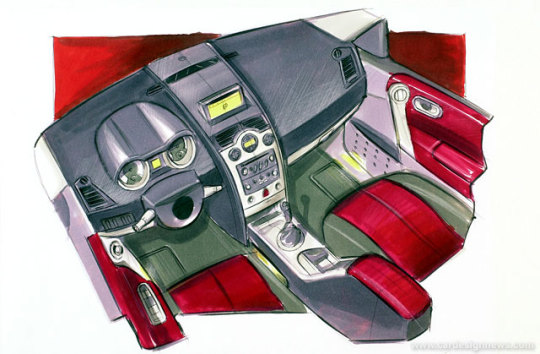
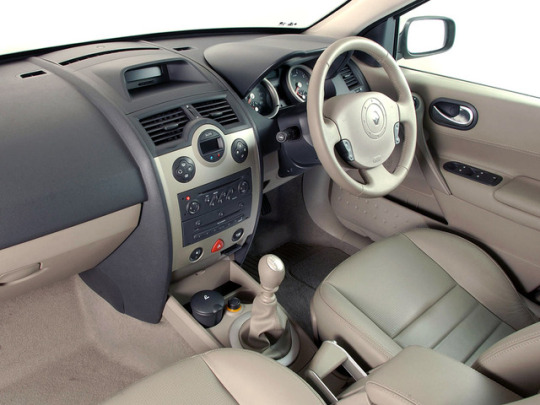
From Inception to Production
Part 2 - Renault Mégane II!
The Renault Mégane is a small family car produced by the French car manufacturer Renault since the end of 1995, and was the successor to the Renault 19. For 2002, the Mégane entered its second generation with a substantial redesign taking place, and was voted European Car of the Year for 2003, whilst also becoming the first car in its class to receive a five star EuroNCAP rating.
#renault#megane#car design#french#voiture#auto#hatch#automobile#renaultlove#renault love#patrick le quément
18 notes
·
View notes
Link
Světová anketa auto roku World Car of the Year 2020 zná své finalisty ve všech kategoriích. A auta jsou podle očekávání zcela odlišná od těch, která se dostala do finále českého auta roku 2020. Která auta tvoří tu nejzásadnější finálovou desítku? A která auta jsou nominovaná do doprovodných anket?
To vše odhalila tisková zpráva, která vyhlašování finalistů na poměrně netradičním místě, kterým byl indický autosalon v Díllí, popisuje. Kromě hlavní ankety, v níž bylo původně nominováno 29 aut, odtajnili pořadatelé finalisty ve čtyřech dalších doprovodných anketách.
Zajímavostí je, že v hlavní anketě světového auta roku má mezi finalisty několik značek dokonce po dvou modelech. Jde o automobilky Kia, Mazda, Mercedes-Benz a Volkswagen. V ostatních anketách je velmi úspěšné Porsche, které většinově obsadilo dvě ze čtyř doprovodných anket.
Kompletní seznam nominovaných automobilů, mezi nimiž bude rozhodovat 86 mezinárodních porotců, je zde.
World Car of the Year 2020:
Hyundai Sonata
Kia Soul EV
Kia Telluride
Mazda3
Mazda CX-30
Mercedes-Benz CLA
Mercedes-Benz GLB
Range Rover Evoque
Volkswagen Golf
Volkswagen T-Cross
World Urban Car Award 2020:
Kia Soul EV
MINI Electric
Peugeot 208
Renault Clio
Volkswagen T-Cross
World Luxury Car Award 2020:
BMW X5
BMW X7
Mercedes-Benz EQC
Porsche 911
Porsche Taycan
World Performance Car Award 2020:
BMW M8
Porsche 718 Cayman/Spyder GT4
Porsche 911
Porsche Taycan
Toyota GR Supra
World Car Design of the Year Award 2020:
Alpine 110S
Mazda3
Mazda CX-30
Peugeot 208
Porsche Taycan
V anketě World Car Design of the Year Award 2020 bude hlasovat 7 profesionálních designérů, kterými budou: Anne Asensio (Francie – Viceprezidentka pro design – Dassault Systemes), Gernot Bracht (Německo – Pforzheim Design School), Ian Callum (Velká Británie – Designový ředitel, CALLUM), Patrick le Quément (Francie – Designer a prezident strategického výboru – The Sustainable Design School), Tom Matano (USA – Academy of Art University v San Francisku a šéfdesignér Mazda), Gordon Murray (Velká Británie – Předseda představenstva, Gordon Murray Group Limited) a Shiro Nakamura (Japonsko – generální ředitel, Shiro Nakamura Design Associates Inc.).
(adsbygoogle = window.adsbygoogle || []).push({});
V rámci ankety World Car of the Year 2020 je vyhlášena také anketa World Car Person of the Year, která bude jako jediná vyhlášena na ženevském autosalonu 2020 v úterý třetího března 2020. V rámci ostatních anket zde budou vyhlášeni tři superfinalisté.
Celkový vítěz i vítězové jednotlivých doprovodných anket bude znám o pár týdnů později. Slavnostní vyhlášení proběhne 8. dubna 2020 na autosalonu New York Motor Show 2020.
Příspěvek Těchto 10 aut se utká o titul světového auta roku 2020 pochází z auto-mania.cz
0 notes
Text
Yerli Otomobilin Tasarımında Emeği Geçen Murat Günak Kimdir?
Yerli Otomobilin Tasarımında Emeği Geçen Murat Günak Kimdir?
1957’de İstanbulda doğan Murat Günak, Volkswagen ve Mercedes-Benz’in eski baş tasarımcısıdır.
Ortaokulu İstanbul’da bitirdikten sonra Günak, yurt dışında, Kassel’deki Hochschule für Bildende Künste’de (Güzel Sanatlar Akademisi) endüstriyel tasarım bölümünde eğitim aldı. Daha sonra Londra’daki Kraliyet Sanat Koleji’nde Claude Lobo ve Patrick Le Quément idaresi altında çalıştı, Ford tarafından…
View On WordPress
0 notes